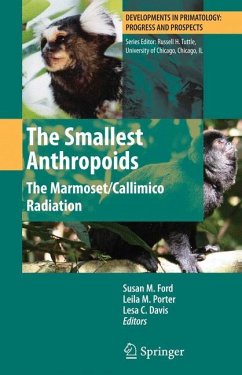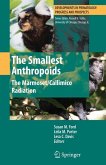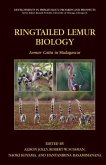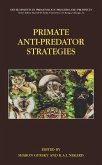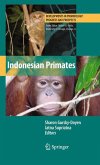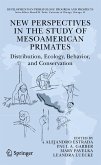This volume represents a comprehensive examination of the newly recognized callimico/marmoset clade, which includes the smallest anthropoid primates on earth. It will explore these diminutive primates in their entirety, with sections on phylogeny, taxonomy and functional anatomy, behavioral ecology, reproductive physiology, as well as address critical conservation issues and the need for conservation action. The topics specifically selected for this volume are pivotal for understanding the evolutionary adaptations and divergence of any primate group, and especially one as diverse and curious as this. The discoveries of new taxa over the last fifteen years along with new genetic data have transformed this group from three genera (one with only a distant relationship to the others) and five recognized species, to five closely related genera, comprising at least 22 species. This volume will be the first to synthesize data on these newly recognized taxa.
This volume is an international endeavor, bringing together primary callimico and marmoset researchers from around the globe, including Brazil and the United States as well as Greece, Italy, Switzerland, and Germany. One of the merits of this volume is that it will serve as a readily accessible work that includes the major findings of several key international researchers whose work has not been easily available to English-speaking scholars. In addition, it draws together lab and field researchers, geneticists, anatomists, and behaviorists in an integrated volume that will provide the most detailed and thorough work on either callimicos or marmosets to date. This volume will also provide a timely forum for identifying future avenues of action necessary for more fully understanding and protecting this intriguing primate radiation.
The Smallest Anthropoids:The Marmoset/Callimico Radiation represents a comprehensive examination of the callimico/marmoset clade, including the smallest anthropoid primates on earth. It explores these diminutive primates from a variety of perspectives including: phylogeny; reproductive, social, and cognitive behavior; ranging behavior and locomotion; anatomy; and conservation. In the last twenty years, the number of taxa recognized in this group has increased from three genera and five species to five genera comprising at least 22 species. Additionally, our understanding of the evolutionary relationships among these taxa has undergone substantial revision, and all are now considered to be closely related to one another (including callimicos). This volume is the first to synthesize data on these newly recognized taxa. It features contributions from geneticists, anatomists, and behaviorists around the world, providing access to major findings of key international researchers whose work has not been easily available to English-speaking scholars. These contributors use field and lab data to test major hypotheses on behavior, evolution, cognition, and other issues.
The Smallest Anthropoids:The Marmoset/Callimico Radiation is a timely forum that identifies future avenues of action necessary to more fully understand and protect this intriguing radiation of diminutive monkeys. It will be of value to field ecologists, conservation groups, individuals working with captive marmosets, natural resource managers in South America, and NGO's, as well as to primatologists and zoologists interested in social behavior, locomotion and biomechanics, morphology, reproductive behavior, and biology.
Susan M. Ford is Associate Professor and Chair of the Department of Anthropology, and past Director of the Center for Systematic Biology, Southern Illinois University.
Leila M. Porter is AssociateProfessor in the Department of Anthropology,Northern Illinois University.
Lesa C. Davis is Associate Professor of the Department of Anthropology and Special Assistant to the President, Northeastern Illinois University, and Research Associate in the Field Museum of Natural History.
This volume is an international endeavor, bringing together primary callimico and marmoset researchers from around the globe, including Brazil and the United States as well as Greece, Italy, Switzerland, and Germany. One of the merits of this volume is that it will serve as a readily accessible work that includes the major findings of several key international researchers whose work has not been easily available to English-speaking scholars. In addition, it draws together lab and field researchers, geneticists, anatomists, and behaviorists in an integrated volume that will provide the most detailed and thorough work on either callimicos or marmosets to date. This volume will also provide a timely forum for identifying future avenues of action necessary for more fully understanding and protecting this intriguing primate radiation.
The Smallest Anthropoids:The Marmoset/Callimico Radiation represents a comprehensive examination of the callimico/marmoset clade, including the smallest anthropoid primates on earth. It explores these diminutive primates from a variety of perspectives including: phylogeny; reproductive, social, and cognitive behavior; ranging behavior and locomotion; anatomy; and conservation. In the last twenty years, the number of taxa recognized in this group has increased from three genera and five species to five genera comprising at least 22 species. Additionally, our understanding of the evolutionary relationships among these taxa has undergone substantial revision, and all are now considered to be closely related to one another (including callimicos). This volume is the first to synthesize data on these newly recognized taxa. It features contributions from geneticists, anatomists, and behaviorists around the world, providing access to major findings of key international researchers whose work has not been easily available to English-speaking scholars. These contributors use field and lab data to test major hypotheses on behavior, evolution, cognition, and other issues.
The Smallest Anthropoids:The Marmoset/Callimico Radiation is a timely forum that identifies future avenues of action necessary to more fully understand and protect this intriguing radiation of diminutive monkeys. It will be of value to field ecologists, conservation groups, individuals working with captive marmosets, natural resource managers in South America, and NGO's, as well as to primatologists and zoologists interested in social behavior, locomotion and biomechanics, morphology, reproductive behavior, and biology.
Susan M. Ford is Associate Professor and Chair of the Department of Anthropology, and past Director of the Center for Systematic Biology, Southern Illinois University.
Leila M. Porter is AssociateProfessor in the Department of Anthropology,Northern Illinois University.
Lesa C. Davis is Associate Professor of the Department of Anthropology and Special Assistant to the President, Northeastern Illinois University, and Research Associate in the Field Museum of Natural History.
From the reviews:
"Provides a timely review and summary of ... anthropoid primates. ... Primatologists in general who want to update their knowledge on callitrichids or specifically on marmosets will find this book very useful. Specialists involved in research on callitrichid biology ... will find specific sections and chapters helpful and informative. Outside the primatological realm anthropologists mammalogists and zoologists will find this book a useful source ... . I consider this book an important contribution to callitrichid biology and hope it will find a wide audience." (Eckhard W. Heymann, Folia Primatologica, Vol. 81 (1), 2010)
"This new, comprehensive volume, edited by primatologists Ford (Southern Illinois Univ.), Porter (Northern Illinois Univ.), and Davis (Northeastern Illinois Univ.), brings together 23 chapters by 59 contributors who focus specifically on marmosets and Callimico. ... In addition to the subject index, the volume includes a taxonomic index, which allows the reader to easily find information on genera and species discussed in the book. Summing Up: Recommended. Upper-division undergraduates through professionals in primatology, biological anthropology, and zoology." (E. J. Sargis, Choice, June, 2010)
"Provides a timely review and summary of ... anthropoid primates. ... Primatologists in general who want to update their knowledge on callitrichids or specifically on marmosets will find this book very useful. Specialists involved in research on callitrichid biology ... will find specific sections and chapters helpful and informative. Outside the primatological realm anthropologists mammalogists and zoologists will find this book a useful source ... . I consider this book an important contribution to callitrichid biology and hope it will find a wide audience." (Eckhard W. Heymann, Folia Primatologica, Vol. 81 (1), 2010)
"This new, comprehensive volume, edited by primatologists Ford (Southern Illinois Univ.), Porter (Northern Illinois Univ.), and Davis (Northeastern Illinois Univ.), brings together 23 chapters by 59 contributors who focus specifically on marmosets and Callimico. ... In addition to the subject index, the volume includes a taxonomic index, which allows the reader to easily find information on genera and species discussed in the book. Summing Up: Recommended. Upper-division undergraduates through professionals in primatology, biological anthropology, and zoology." (E. J. Sargis, Choice, June, 2010)

